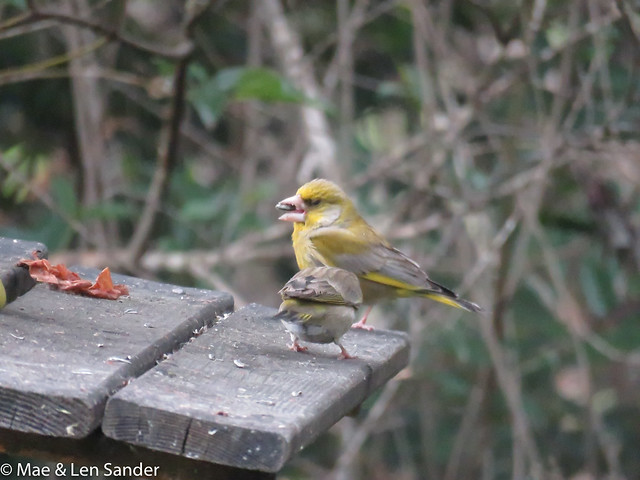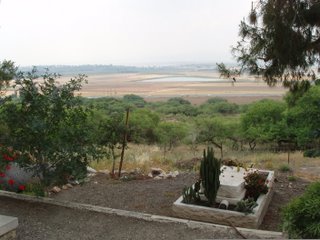To check what drives my purchasing, I'm taking an informal inventory of how I cooked and what ingredients I've had on hand this month. I'm thinking about staple products that I always buy, where they were grown and processed, and which stores they came from, and what's in season. Of course winter isn't quite over here in Michigan -- our last snowfall was less than two weeks ago, so nothing is actually growing right now except in hoop houses!
Now for some details of what I cooked and where I bought the ingredients:
Other food in the freezer besides chicken and salmon includes:
- Ground lamb from Argus (local producer: Ernst Farms).
- New Zealand lamb chops from Costco.
- Ice Cream from Target and TJ's.
- Bread from Zingerman's Bakehouse.
- A box of beef ragout that I made a few months ago for later use. Leftovers are always with us, including little boxes and glass dishes in the fridge.
 |
| Using an LA Times recipe, I tried a new sort of cornbread, topped with brûlée sugar. Interesting recipe: my usual cornbread includes hot peppers while this is a dessert. |
A few more items that I almost always have in my pantry:
- Cereal, cookies, and crackers mostly from Costco, TJ, Target. Not so healthy, but we still eat these items often. Cereal is only the second-most unhealthy food we use. (I think the worst is Diet Coke usually from Costco).
- Dried fruit. I made some into fruit salad with tangerines to go with the cornbread. I use dried fruit for lots of other dishes as well. Costco sells only impossibly huge quantities of dried fruit so mine comes from TJ and Whole Foods.
- Nature Valley Granola bars from Walgreen's -- not even a food store, but they always have the best sales!
 |
| Pantry and produce items going into a salad: tuna, white beans, olive oil, vinegar, Campari tomatoes, parsley, celery, lettuce, bell pepper, zatar. |
 |
| Tuna and white bean salad. With variations, I can almost always make this. |
 |
| Ingredients for shakshouka: canned tomatoes, spices, garlic, bell pepper, eggs. |
Produce that I have on hand now:
- Hoop house lettuce and carrots from Argus.
- Cabbage & celery from Whole Foods.
- Campari tomatoes -- my favorite for this time of year. They are small, but bigger than cherry tomatoes, and have a bit more flavor than other winter tomatoes. The same brand -- usually grown in Mexico -- is sold at TJs, Whole Foods, Target, and Costco. Prices and quantities vary!
- Grapefruit, apples, lemons, bell peppers, & tangerines mostly from TJs and Whole Foods.
Finally, the refrigerator always has orange juice, milk, Diet Coke, eggs, jam, mayonnaise, catsup, mustard, peanut butter, butter, yogurt, industrial and artisanal cheeses, deli meat for sandwiches, and a large variety of other condiments and sauces for Asian, Mexican, Middle Eastern, American, and other dishes. Just as Ruhlman suggests about my fellow American cooks, I'm brand-conscious on some products and price-conscious on others. Of course, he also discusses the other Americans who aren't cooks, and who shop quite differently.
Ruhlman believes consumers today utilize a number of markets: I think I exceed the number frequented by his typical American. I shop, as my photos and lists indicate, at several different types of food stores which are very conveniently located in my area. Big national chains where I shop include Costco (3.5 miles from my house), Trader Joe's (1 mile), Whole Foods (1.7 miles), Kroger (2.3 miles), and Target (3.6 miles). The Argus Farm Stop (half a mile from my house) is an innovative consignment shop where local farmers and small-scale processors bring products including meat and produce, locally fresh-ground coffee, honey, maple sugar, jams, eggs, dairy products, and various other foods. Zingerman's Bakehouse (located fairly close to Costco) is a local source of very good bread. There's another locally-owned specialty market nearby called The Produce Station where I shop less often. There are no local chain supermarkets here like the family-owned Cleveland chain Ruhlman describes: the last one sold out to Kroger a few years ago.
What's missing in my kitchen that Ruhlman finds most popular with shoppers today? That would be food from the ready-to-eat food counters at Whole Foods, the pre-made foods in Trader Joe's freezer and refrigerator cases, the ready-to-eat foods in almost every food department of Costco, and many types of takeout food. I rarely use these products except when I'm in a temporary vacation rental without a fully stocked kitchen. (I've had more Costco rotisserie chickens in Hawaii than at home.) I'm really not with the times in this respect.
The fact of the matter is that I do look carefully at the things in the deli and the hot food counters at Whole Foods and on the tasting tables at Costco. However, I use these sights and samples as hints for dishes I could cook. I've been doing this for a long time as the Paris Charcutiers offered very similar ready meals during my various long visits there. After purchasing these very appetizing treats, I realized that duplicating a beautiful salad or roast from these elegant counters was far cheaper and the results were often fresher. Same is true here and now!
Note: none of the markets or product brands I mentioned is sponsoring this post in any way. I never take any money or products or books for any mention on this blog! I respect bloggers who disclose economic connections when they have them, and I avoid blogs where I see obviously unacknowledged financial connections.
 |
| From the Argus Farm Stop Website. |
What's missing in my kitchen that Ruhlman finds most popular with shoppers today? That would be food from the ready-to-eat food counters at Whole Foods, the pre-made foods in Trader Joe's freezer and refrigerator cases, the ready-to-eat foods in almost every food department of Costco, and many types of takeout food. I rarely use these products except when I'm in a temporary vacation rental without a fully stocked kitchen. (I've had more Costco rotisserie chickens in Hawaii than at home.) I'm really not with the times in this respect.
The fact of the matter is that I do look carefully at the things in the deli and the hot food counters at Whole Foods and on the tasting tables at Costco. However, I use these sights and samples as hints for dishes I could cook. I've been doing this for a long time as the Paris Charcutiers offered very similar ready meals during my various long visits there. After purchasing these very appetizing treats, I realized that duplicating a beautiful salad or roast from these elegant counters was far cheaper and the results were often fresher. Same is true here and now!
I'll be sharing this post with a group of other bloggers who write about their kitchens and what they have that's new and different. You can find them all listed at a blogging event called "In My Kitchen This Month," hosted by Sherry's Pickings. Check the list here to see inside the kitchens of bloggers on several continents!
Note: none of the markets or product brands I mentioned is sponsoring this post in any way. I never take any money or products or books for any mention on this blog! I respect bloggers who disclose economic connections when they have them, and I avoid blogs where I see obviously unacknowledged financial connections.














































